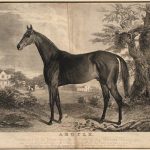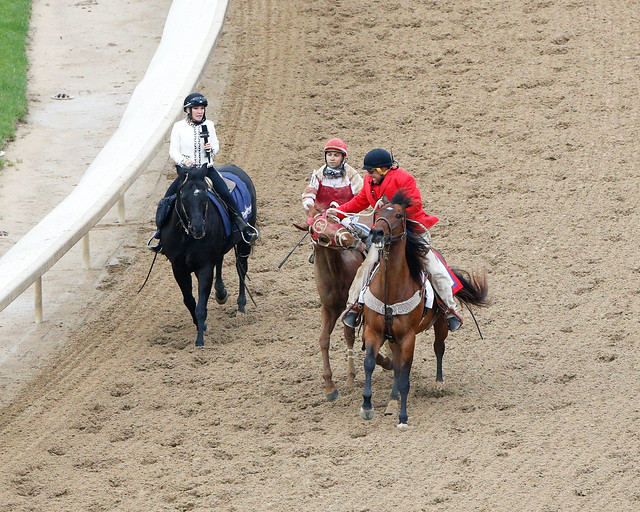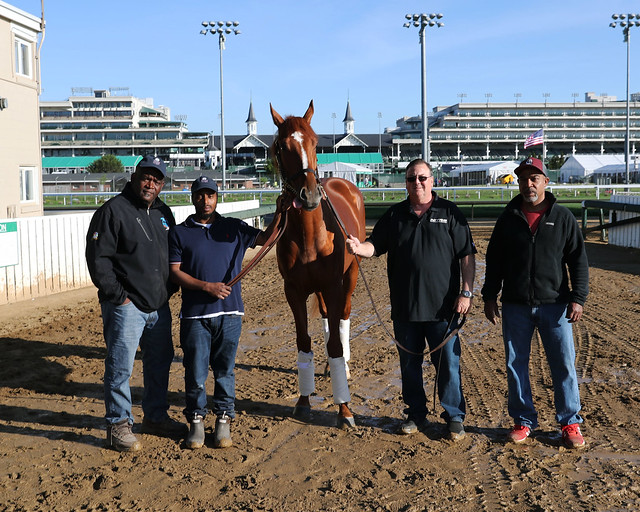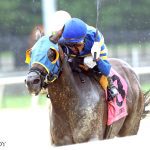Rich Strike offers argument for Triple Crown change
Where you stand on owner Rick Dawson’s decision to have his Kentucky Derby winner Rich Strike skip the Preakness depends, like most decisions, on where you sit. But unless you’re sitting where Rick Dawson and trainer Eric Reed are, it’s hard to have a particularly informed opinion.
The statement the group put out – citing “more recovery time & rest” – does little to clarify the situation, especially in light of earlier comments that seemed to suggest it was full speed ahead for the son of Keen Ice.
What Rich Strike’s defection will likely do, though, is reignite debate about the Preakness’ spot on the calendar. He’s the second horse in four years to win the Derby and skip the Middle Jewel, and obviously, the Triple Crown loses some luster if it’s not, you know, triple.
Should the timing of the Triple Crown races be changed? Should there be more time between the Derby and Preakness? And perhaps also the Preakness and Belmont?
My friend Mike Valiante argues that it should not, that tradition demands it remain the same and that the difficulty of the sequence is what makes it great.
Here’s why he’s wrong. Here’s why it’s past time to stretch the time between races to four weeks.
First, let’s be clear: the current configuration of the series – two weeks from Derby to Preakness and then three from Preakness to Belmont – is an anachronism, a remnant from a different age of racing.
Modern-day trainers and owners simply don’t handle horses, particularly high-end horses, this way anymore. Want proof?
- Spa Selections 2025: Saratoga Picks July 13
 Picks and analysis for today’s key races from Saratoga.
Picks and analysis for today’s key races from Saratoga.
Average annual starts per runner declined from 9.21 in 1980 to just 5.95 in 2021. The number of days between starts for the average Preakness runner has risen from 16.6 in 1991, when Hansel wore the Black-Eyed Susans, to 30.1 last year. Excluding Derby runners, that number has risen from 21 to 37, a 76% increase.
Horses that started in the Derby or ran on Derby weekend made up six of the eight Preakness starters in ‘91. In 1996, they comprised eight of the 12. Last year? Just four of the 10 had run two weeks prior.
Secretariat made a dozen starts in his Triple Crown season, averaging one every 19 days during his active period. Five of those starts came on rest of two weeks or less. That was commonplace back in the 1970s.
The two most recent Crown winners, American Pharoah and Justify, never made a start on rest of two weeks or less – except in the Preakness.
So why maintain the current configuration? Tradition? Hardly. The current two week-three week arrangement only came to be in 1969, when NYRA added another week before the Belmont, which previously had been two weeks after the Preakness. Both the timing and the order of the three races have shifted over the years.
POINT
With changes in training and racing regimens, the Triple Crown series is an anachronism, Frank Vespe argues, and lengthening it could benefit the series itself and racing as a whole.
COUNTERPOINT
The Triple Crown configuration is just fine, Mike Valiante responds. The series works fine, and changing it runs the risk of diminishing, rather than increasing, interest in the sport.
Does anyone put an asterisk next to Secretariat’s name because of the dates change? Or next to Affirmed? Seattle Slew?
As racing people, we can’t simultaneously applaud Rich Strike’s humans for “doing what’s best for the horse” by skipping the Middle Jewel and also demand that the Middle Jewel remain just two weeks from the Derby.
A strong argument can be made that the biggest issue isn’t the horses but the horsemen. In fact, Derby horses generally run well in the Preakness, with 22 of the last 26 Preakness winners having run in either the Kentucky Derby or the Kentucky Oaks.
But that’s neither here nor there: if the horsemen believe their charges need more time and behave accordingly, that’s the governing factor that matters.
Nor is the argument that it’s supposed to be a difficult test compelling. Of course it’s supposed to be hard; winning three consecutive Grade 1 events – at different distances, with fields of up to 20 horses – will always be difficult. In 2020, when the pandemic led to shifts in the series and more time between races, the three races were won by three different horses, suggesting that more time doesn’t make it any easier to win.
- Argyle and Thoroughbred racing in the 1830s
 Connected to Supreme Court justices and governors, the Maryland-bred Argyle became one of the best horses of the 1830s. His story.
Connected to Supreme Court justices and governors, the Maryland-bred Argyle became one of the best horses of the 1830s. His story.
In fact, the most compelling argument for leaving things the way they are isn’t a racing argument at all; it’s a business argument. The Triple Crown series is one of the few things in racing that works; it’s really the only racing event that compels the general public’s interest, and after a Preakness that topped $100 million in handle, why mess with success?
Back in 2014, then-Maryland Jockey Club president proposed such a change, arguing for a two-month sequence, with the Derby remaining on the first Saturday in May, followed by the Preakness during the first weekend in June and the Belmont the first weekend of July.
This would benefit, he said, not just the Preakness and not just Maryland’s races but the sport as a whole.
“[T]his idea is not just for the Triple Crown races,” Chuckas said then. “We have an obligation to the public to put our best racing on the table when the world is watching and we are not doing that. We could promote a Woodford-Dixie-Manhattan series for older turf stars and Triple Crown filly series with the Kentucky Oaks, Black-Eyed Susan and Acorn. All those things are possible but it is going to demand a collaborative effort between the parties to make this happen.”
And none of it can, or will, happen if the parties stick to the same schedule.
Look, tradition matters, and it’s important. But tradition should be the comfortable sweater that allows us to face the new day – not the straitjacket that binds us to a very different past.
Every other sport has long since recognized that change, managed correctly, can be of enormous benefit. They’ve added teams, expanded playoffs, lengthened seasons – taken numerous steps that traditionalists at first bemoaned but soon embraced.
It’s time for racing to do the same.
PHOTOS
LATEST NEWS

























So an 8?-1 shot wins and we change everything? Rich Strike would have been up the track at Pimlico imho. Doubt RS would have gotten that sizzling king pace to run into and a rail run. Or if there was say a million dollar bonus for the derby winner to run at the Preakness. They know there horse s value will drop if he doesn’t run another bang up race
Also by changing the dates it affects the Haskell, Travers and then the BC. Look at the last few years. More time between races changes the whole complexity
This Dawson guy is a one horse owner, in fact this is the only horse he has ever owned in whole. The horse is a claimer who got lucky. You move the Preakness, then you destroy The Preakness. Tell them to move the Derby to mid April.